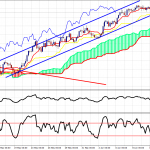The worst January start for U.S. stocks since 2009 should get your attention. If you’ve been hiding underneath a rock or hibernating in a cave-like dwelling, it’s time to come out. “A little sunlight is the best disinfectant,” as Judge Brandeis might say.

Most global stock yardsticks from China (NYSEARCA:ASHS) to Japan (NYSEARCA:EWJ) and even the United Kingdom (NYSEARCA:EWU) have already crashed 20% or more. Thankfully, the Dow Industrials (NYSEArca:DIA), Nasdaq Composite (Nasdaq:ONEQ), and S&P 500 (NYSEARCA:VOO) are not yet in a bear market. That’s the good news. The bad news is since the average investor (both amateur and professional) underperforms the market, it’s safe to say the typical investor is doing much worse versus the 6% to 10% losses already experienced by U.S. stock benchmarks since the start of the year.
What does it mean?
It means the pathetic rhetoric that investors should “do nothing,” “stand still” or “hold the course” is the wrong advice.
(Audio) The Best Performing Stock Over the Past 30-Year isn’t a Household Name
Think about it this way: Will a misaligned portfolio suddenly fix itself because a person promises themselves to be extra diligent and patient? Will a 20-year time horizon or longer instantly become the magical fix for a person with the bad habit of buying the wrong assets at the wrong prices? Will saving even more money than a person is already saving automatically convert them into becoming a truly great investor? Who besides fairyland believing experts buys this propaganda?
Now, let’s examine five concrete reasons when “staying the course” is absolutely something you should never do.
Reason #1: If the performance of your investment portfolio is significantly worse vs. a blended benchmark of index ETFs that closely resembles your asset mix over a relevant time frame – DON’T STAY THE COURSE.













Leave A Comment